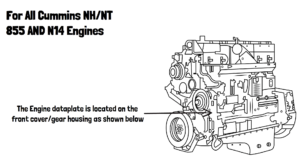
Introduction
A full engine rebuild is necessary when a Cummins N14 experiences significant wear, excessive blowby, loss of compression, oil consumption, or catastrophic failure. Proper disassembly, cleaning, inspection, and reassembly following OEM torque specifications are critical to restoring the engine to peak performance and longevity.
This guide provides a detailed, step-by-step process for rebuilding your Cummins N14 engine, including component inspection, reassembly procedures, and torque specifications to ensure a reliable and durable rebuild.
Parts Catalog for N14 Cummins Industrial Engines
A. Engine Disassembly

Before beginning disassembly, ensure you have a clean, organized workspace, all necessary tools, and a way to store parts safely. Label components during removal to simplify reassembly.
1. Preparation & Safety Measures
- Park the vehicle on a flat surface and engage the parking brake.
- Disconnect the battery to avoid accidental electrical shorts.
- Drain all fluids (coolant, oil, and fuel).
- Use an engine hoist for safe removal of heavy components.
2. Remove External Components
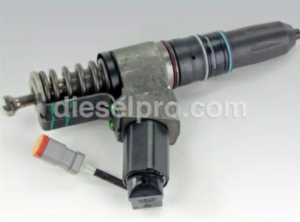
- Remove the fan, belts, and radiator to access the front of the engine.
- Detach the turbocharger and exhaust manifold.
- Disconnect the fuel system, including injectors and fuel pump.
- Remove wiring harnesses and ECM if equipped with CELECT™ or CELECT™ Plus.
3. Cylinder Head & Valve Train Removal
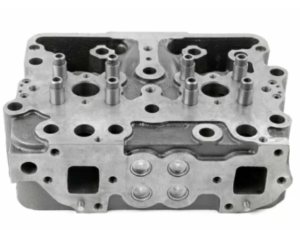
- Unbolt and remove the valve cover.
- Mark the push rods and rocker arms to reinstall them in their original locations.
- Loosen head bolts in sequence to prevent warping.
- Carefully lift the cylinder head with a hoist.
4. Piston & Connecting Rod Removal
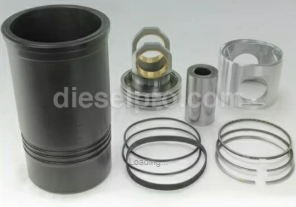
- Rotate the crankshaft to BDC (Bottom Dead Center).
- Remove the oil pan and unbolt the connecting rod caps.
- Push pistons and connecting rods out of the top of the block.
- Inspect rod bearings for wear or scoring.
5. Camshaft & Crankshaft Removal
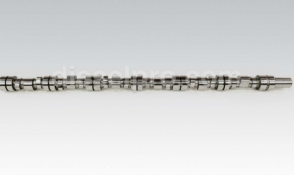
- Remove the timing gears and cam followers.
- Carefully slide out the camshaft to avoid damage to lobes and bearings.
- Unbolt main bearing caps and carefully remove the crankshaft.
Rebuild Kit & Related Components for Cummins N14 Industrial Engine
B. Cleaning & Inspection

A clean, properly inspected engine block ensures a successful rebuild. Skipping this step can lead to premature failure.
1. Cleaning the Block & Cylinder Head

- Steam clean the block and head to remove oil, dirt, and carbon buildup.
- Use plastic bead blasting for stubborn deposits (avoid sandblasting).
- Clean all oil passages and coolant jackets using compressed air.
2. Crack & Warping Inspection
- Use a magnetic particle test or dye penetrant to check for cracks.
- Place a straight edge across the block deck and head surface.
- Measure warping with feeler gauges (excessive warping requires resurfacing).
3. Inspect Cylinder Liners & Pistons
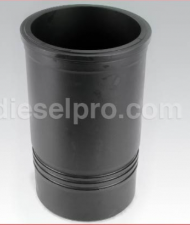
- Check cylinder liners for scoring, pitting, or excessive wear.
- Measure cylinder bore diameter with a bore gauge (tapered bores require re-honing or new liners).
- Inspect piston rings and grooves for excessive clearance or damage.
4. Connecting Rod & Crankshaft Inspection
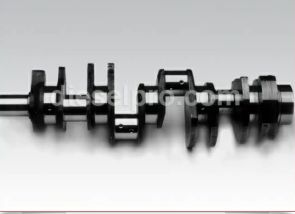
- Check connecting rods for twisting, bending, or small end wear.
- Measure rod bearing clearance with Plastigage®.
- Inspect crankshaft journals for scoring or out-of-round wear.
- Check main bearing saddles for proper alignment.
C. Engine Reassembly & Torque Specifications

Reassembly requires precision and adherence to OEM specifications. Using the correct torque sequence and clearances ensures longevity and performance.
1. Installing the Crankshaft & Bearings
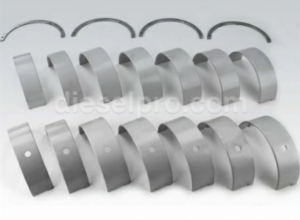
- Lubricate main bearings with assembly lube.
- Carefully lower the crankshaft into position.
- Install new main bearings and torque main caps:
- 30 ft-lb, then an additional 90° turn (angle torque method).
- Check crankshaft end play (normal clearance: 0.003”–0.015”).
2. Piston & Connecting Rod Installation
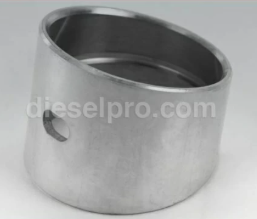
- Install new piston rings (ensure correct orientation).
- Apply engine oil to cylinder walls and piston skirts.
- Insert pistons carefully using a ring compressor.
- Torque connecting rod caps:
- 50 ft-lb + 60° turn (check rod side clearance: 0.010”–0.020”).
- 50 ft-lb + 60° turn (check rod side clearance: 0.010”–0.020”).
3. Camshaft & Timing Gear Installation

- Lubricate camshaft lobes and bearings with assembly lube.
- Carefully insert the camshaft into position.
- Align and install timing gears, ensuring proper timing marks match.
4. Cylinder Head & Valve Train Assembly
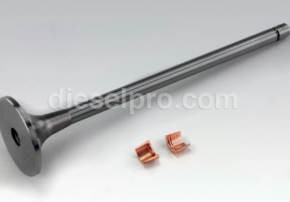
- Use new head gaskets and align the cylinder head properly.
- Torque cylinder head bolts in sequence:
- 90 ft-lb (initial), then 150 ft-lb, final 90° turn.
- 90 ft-lb (initial), then 150 ft-lb, final 90° turn.
- Install push rods, rocker arms, and adjust valve lash:
- Intake: 0.014”
- Exhaust: 0.027”
5. Fuel Injector Installation & Priming the Lubrication System

- Install fuel injectors and torque hold-down bolts to 40 ft-lb.
- Prime the oil system by filling oil galleries and pump before startup.
Final Checks & Engine Startup
Once the rebuild is complete, take the following steps before starting the engine.
1. Pre-Start Inspection
- Double-check all torque settings and component alignments.
- Verify that all sensors and wiring connections are properly secured.
2. Priming the Fuel System
- Fill the fuel filter with diesel and prime the fuel pump manually.
- Bleed air from fuel lines and injectors using a sight glass.
3. Initial Engine Start & Break-In Procedure
- Start the engine and let it idle at 900-1000 RPM.
- Monitor oil pressure (30–45 psi) and coolant temperature.
- Run at varying loads and speeds for the first 100 hours to seat rings properly.
Common Issues & Troubleshooting After a Rebuild
1. Engine Won’t Start
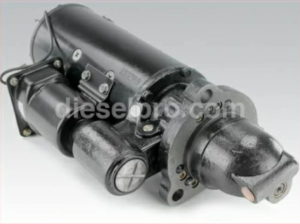
- Check battery voltage and starter motor function.
- Ensure fuel system is primed and injectors are bled.
- Verify ECM settings (if applicable).
2. Low Oil Pressure
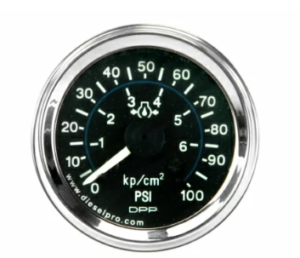
- Check for oil leaks or improperly installed bearings.
- Verify oil pump function and pressure relief valve operation.
3. Overheating Issues
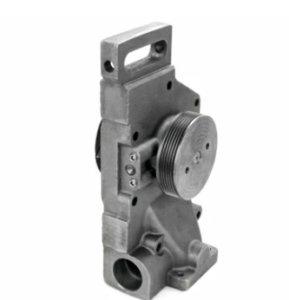
- Ensure coolant is circulating properly and thermostat is functional.
- Verify radiator and water pump operation.
4. Excessive Smoke from Exhaust

- Black smoke: Overfueling due to faulty injectors.
- White smoke: Coolant leaking into combustion chamber.
- Blue smoke: Excessive oil consumption from worn valve seals.
Conclusion
Rebuilding a Cummins N14 engine is a complex but rewarding process when done correctly. By following OEM specifications, inspecting all components thoroughly, and ensuring proper torque settings, you can restore your engine to like-new performance.
Always perform final checks and a proper break-in procedure to maximize reliability and efficiency. If you encounter any issues, refer to the troubleshooting section to diagnose and correct problems early.
A properly rebuilt Cummins N14 will deliver years of dependable service, making the investment in time and effort well worth it!
Parts Catalog for N14 Cummins Industrial Engines



 Free US Calls: 1-888-433-4735
Free US Calls: 1-888-433-4735 International: 305-545-5588
International: 305-545-5588